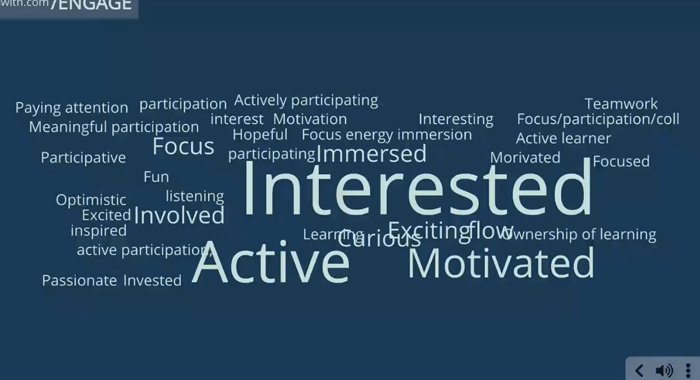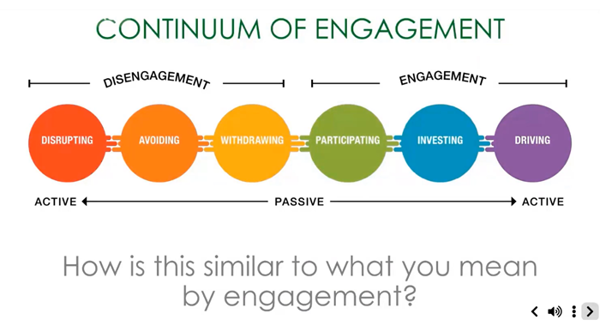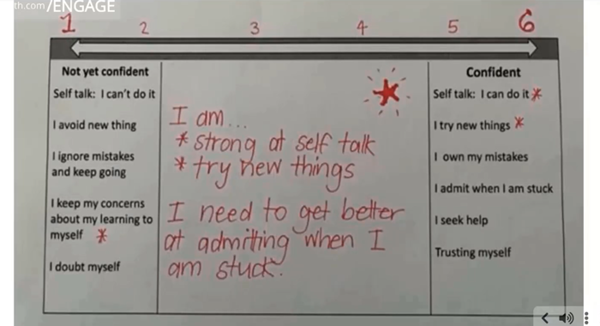A CONTINUUM OF ENGAGEMENT
In 2016–2017, Dr Berry decided to investigate the concept of student engagement from the perspective of the classroom teacher. In in-depth interviews with teachers, she explored their conceptions of student engagement in learning. Dr Berry was interested in their descriptions of everyday examples of student engagement as well as their descriptions of less common – but often powerful – examples of highly engaged students. Naturally, there were also many examples of students who were either actively disengaged with their learning or passively opting out. From this data, she created a continuum of engagement – and associated behaviours – that gives teachers and students concrete examples of what students might be doing within each category and how they might be interacting with their peers.
In the webinar Dr Berry unpacked each element of the continuum and explained the types of behaviours that might be observed. She expressed concern that in recent years the number of students who are passively disengaged has increased and that these students do just as poorly as those who are actively disengaged but are likely to receive less support and attention.




